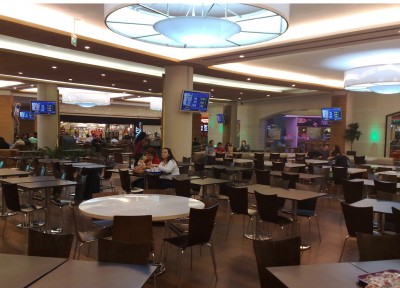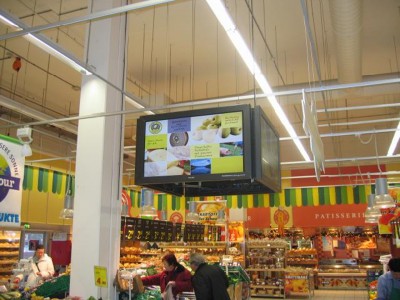Common scenarios
For most of today’s existing networks, the designers and/or operators have chosen one of three scenarios for media player placement:
- Integrated into the screen, using player-on-chip, open pluggable specification (OPS) or other internal interface technology.
- Mounted externally to the screen.
- Located away from the screen, such as in a data closet or at a remote facility.
Each of these options works differently and will have different repercussions in terms of the reliability, accessibility and security of the media players, which in turn will affect the TCO of the digital signage network.

Screen positioning is arguably the most important factor in designing a digital signage network, but media players are also mission-critical.
In either of the first two scenarios, i.e. with media players placed at or in the screens, the content is most commonly delivered via Internet Protocol (IP) over the network and transmitted directly to the display device. As the media players are in the public space with the screens and thus prone to ambient damage, they potentially expose the network’s owner-operator to increased costs to maintain reliability and functionality.
In the third scenario, media players are placed in ‘back rooms’ and media signal extension and distribution equipment is used to deliver the content, usually over a Category 5 (Cat5) or 6 (Cat6) cable, to a receiving device mounted at the screen. Depending on the specific technology used for this purpose, these distances can range from a few meters to a kilometre or more.
The question when designing and building out a digital signage network, then, is how to determine if it is best to position the media players at the screens or in a back room. There are advantages and disadvantages to each option.
Player at screen
The ‘player at screen’ options are suitable for digital signage applications where the screens are easily accessible and/or where the back room is either too difficult to access, perhaps due to IT security concerns, or too easy to access by unauthorized personnel, thus putting the hardware at risk. The existing network infrastructure can be used to transmit content from one central player to the multiple players at the screen locations.
Compared to other options, ‘player at screen’ applications use less hardware, simplify setup and reduce installation costs.
There are a few fundamental challenges with ‘player at screen’ scenarios that need to be addressed in the planning process. As mentioned, the devices are in public spaces and therefore may be exposed to unfriendly environmental conditions, including everything from heat and cold to dust and dirt. These conditions may have serious repercussions by shortening the players’ average time between failures and thus increasing TCO.

When media players are attached to screens, they are often either positioned high out of easy reach.
Also, since the players are attached to the screens, they are often either positioned high out of easy reach or sandwiched between a screen and a wall, so servicing and upgrading them can prove challenging. It may be necessary to remove the screen from the wall and/or remove its mounts and brackets to reach the player, which in many retail environments would be problematic.
If a player malfunctions in the middle of the day, for example, the digital signage network operator may not be permitted to bring in a repair professional and a ladder for an hour or two to fix the hardware right in front of the store’s customers—nor to close the store to service it. Instead, he/she would most likely need to wait until non-opening hours, such as early in the morning, late at night or on the weekend.
Also, depending on the nature of the location, placing media players in a public space can expose them to security problems, including vandalism and theft. This may necessitate adding more security measures to protect the investment than would otherwise be needed if the players were installed somewhere else with better existing protection.





